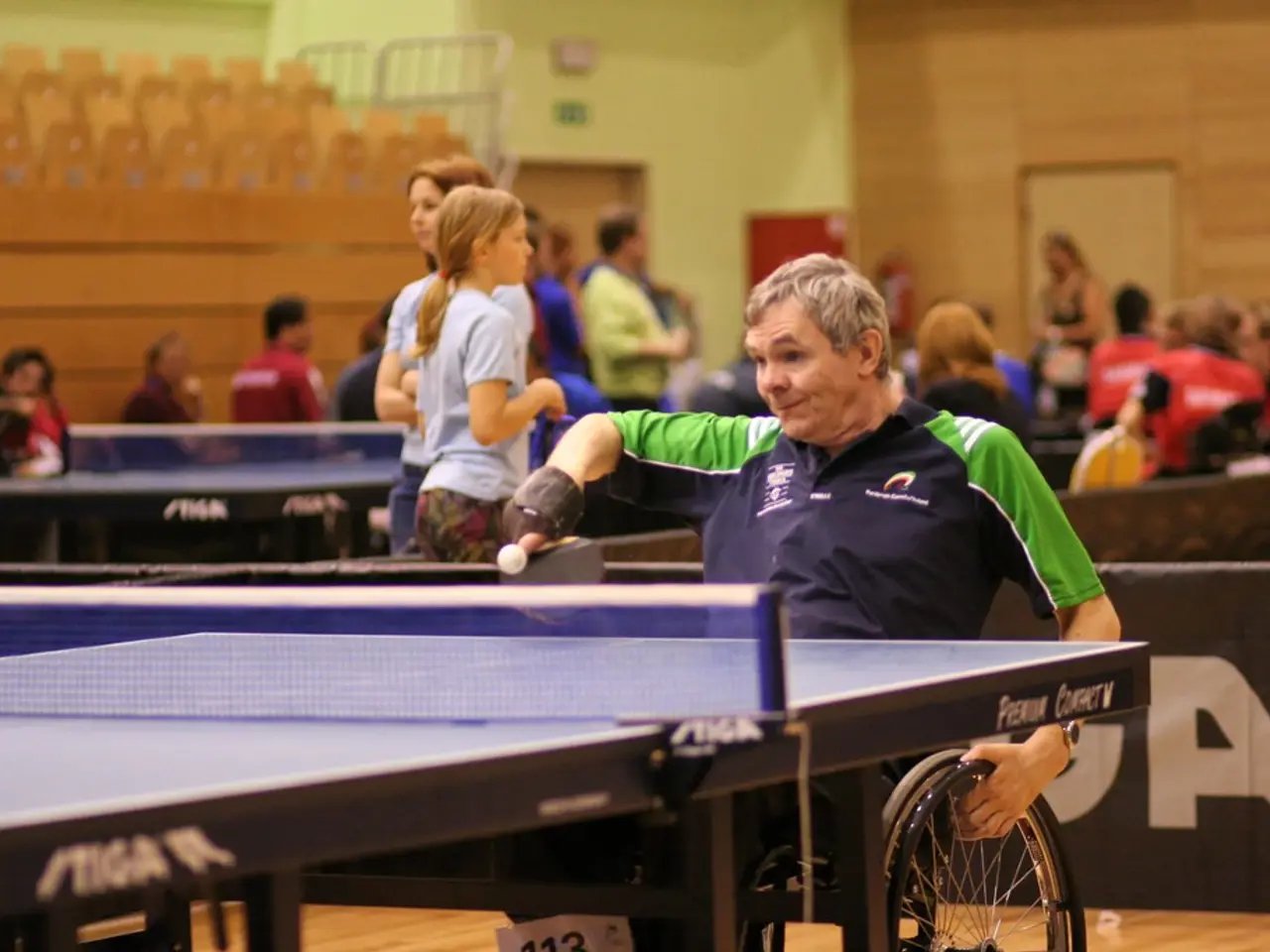Swapping Ailing Brain Cells for Healthy Ones could Lead to Novel Approaches for Treating Huntington's Disease
In a groundbreaking development, researchers at the University of Rochester have made a significant stride in understanding the role of glial cells in neurodegenerative diseases. The study, published in Nature Biotechnology, details the transplantation of healthy human glial cells into the brains of baby mice, creating human glial-chimeric mice [1].
This technical achievement allows researchers to study human glial cells in a living brain, opening up new avenues for research into diseases like Huntington's disease (HD). In the striatum, healthy human glial cells displaced and eliminated their HD counterparts, indicating the potential for replacing diseased and aged glial cells in the central nervous system (CNS) to enhance remyelination and potentially restore CNS function [1].
Steve Goldman, MD, PhD, co-director of the Center for Translational Neuromedicine at the University of Rochester, is the lead author of the study. Goldman and his team have spent a decade making scientific progress, culminating in these new findings. The development of strategies for producing the brain's glial support cells from embryonic stem cells in 2013 paved the way for this breakthrough [1].
The new study also suggests that healthy human glia can replace sick human glia in another human brain, indicating potential value for cell replacement therapies. After transplantation, human glial progenitor cells quickly outcompeted native cells, resulting in brains with mouse neurons and human glia [1].
Transplanting healthy human glial progenitor cells into mouse models of HD delayed disease progression, reinforcing the importance of glial dysfunction in this neurodegenerative disease. The study describes the ability of human glial progenitor cells to compete with each other in the adult brain, with young and healthy cells having a competitive advantage over aged and diseased cells [1].
Younger healthy human glial progenitors outcompeted older and otherwise healthy human glia, suggesting that cellular youth is a critical determinant of competitive success. The wave of migration of healthy cells can be observed, with a clear border where disease cells are dying off and being replaced by healthy ones [1].
The research was supported by the Novo Nordisk Foundation, the Lundbeck Foundation, the Olav Thon Foundation, and the Adelson Medical Research Foundation. The additional authors of the study include researchers from the University of Copenhagen and various medical centers. Goldman holds additional positions at Sana Biotechnology and the University of Copenhagen [1].
The new research suggests that various neurological and psychiatric disorders, such as HD, ALS, and schizophrenia, may be caused by dysfunctional glial cells. The study highlights the potential for therapeutic replacement of diseased or aged glial cells by healthy induced neural stem cells (iNSCs) to restore myelin and improve CNS repair, opening up avenues for treating chronic neurodegenerative and demyelinating disorders [1].
However, limitations remain, such as the delivery method, the need for higher cell doses, immunosuppression protocols, and studying patient-specific impacts on remyelination efficacy [1]. Further research is needed to verify if the benefits extend to normal aging or other physiological contexts, such as aged wild-type animals. Nevertheless, this study offers promising therapeutic implications for neurodegenerative diseases and demyelinating conditions.
- This study published in Nature Biotechnology explores the potential of health-and-wellness interventions, focusing on the replacement of diseased and aged glial cells in the central nervous system (CNS) to enhance remyelination and possibly restore CNS function, particularly for chronic neurodegenerative diseases like Huntington's disease (HD).
- The research also extends its exploration to mental-health conditions, suggesting that various neurological and psychiatric disorders, such as HD, ALS, and schizophrenia, may be caused by dysfunctional glial cells.
- The understanding of glial cells in neurodegenerative diseases, as investigated by Steve Goldman's team at the University of Rochester, could lead to advancements in medical-conditions treatment, specifically in space-and-astronomy, as the study highlights the potential for treating chronic neurodegenerative and demyelinating disorders.
- In the realm of health-and-wellness, including mental health, neurological disorders, and space exploration, this research points towards the possibility of treating not only neurodegenerative diseases but also demyelinating conditions with therapeutic replacement of diseased or aged glial cells by healthy induced neural stem cells (iNSCs).




